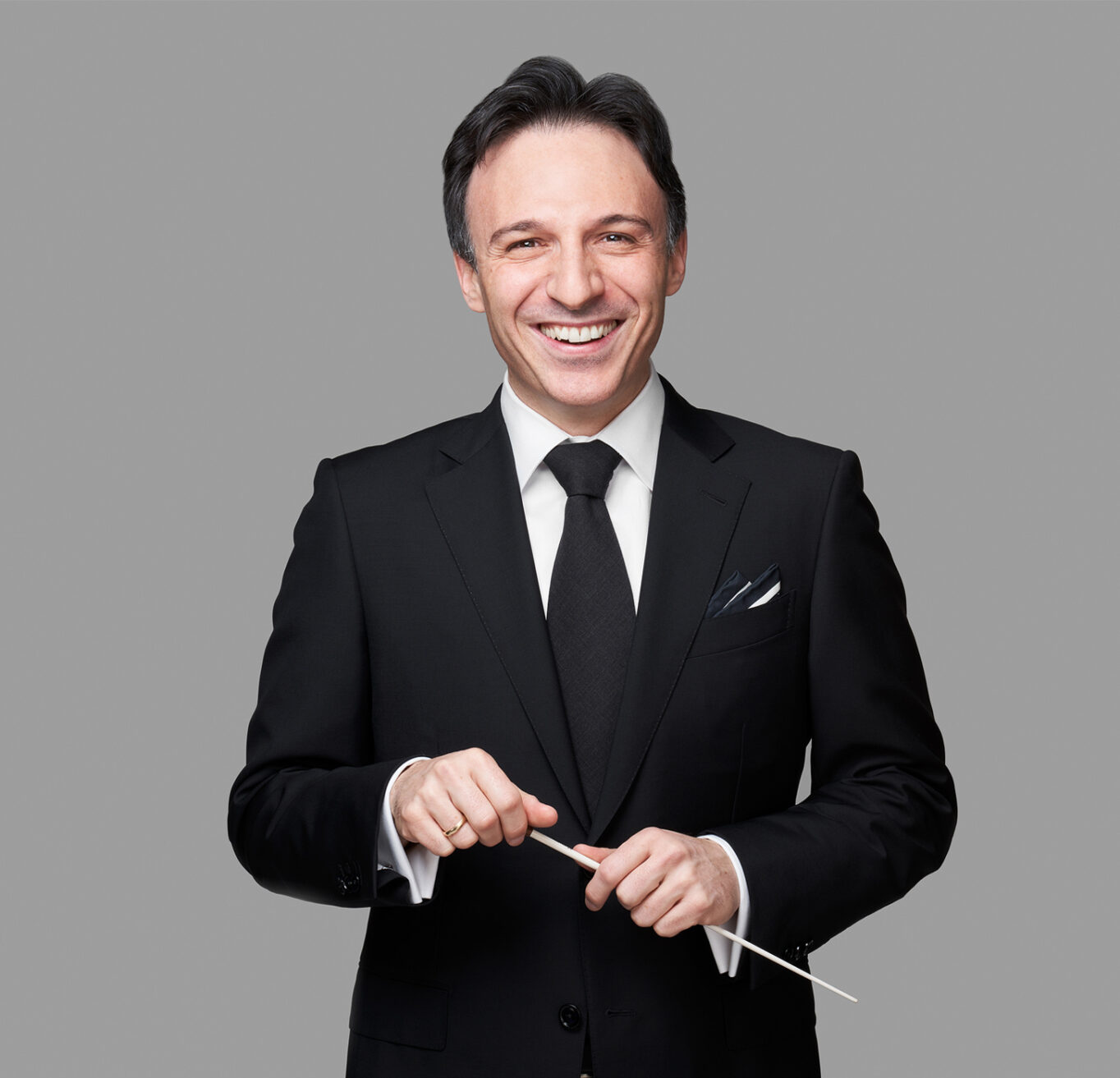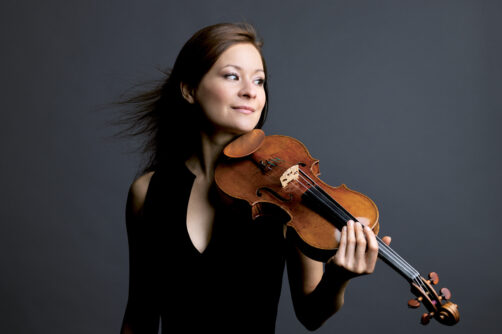
Stars in his Eyes
19 April, 2023
Conductor Umberto Clerici explores the cosmic connections between Biber, Richard Strauss and Georges Lentz, and his excitement at working with stellar violinist Arabella Steinbacher on Lentz’s new violin concerto.
By Umberto Clerici
When I create concert programs, I want that program to have a story.
I want that story to intrigue listeners long before the concert, so they are compelled to investigate the connections between the pieces of music on the program – especially when those connections aren’t immediately clear. The story continues in the concert, and you hear great music, but you also hear how the different pieces interact. And it continues after the concert, whether that’s reading back through the concert notes, or listening to a recording of those same pieces – or even different pieces related to the same theme.
I really think that the performance itself is only a checkpoint between the past and the future for the audience.
And I am excited to be returning to the Sydney Symphony in April to conduct ARABELLA STEINBACHER PLAYS LENTZ, with three pieces of music that connect to each other in a very direct way.
The three pieces in this concert are the Battaglia by Heinrich Biber, which was written in 1673 – 350 years ago. Then we have Georges Lentz’s new violin concerto that was written from 2018 until this year. And finally Thus Sprach Zarathustra, the big tone poem by Richard Strauss that became very famous when Stanley Kubrik used it in his film 2001: A Space Odyssey.
The centre of this concert is this new work by Georges. Georges is a really special and intelligent composer, and because he is not a full-time composer – he has been a member of the Sydney Symphony’s first violins for many, many years – he can take all the time in the world to compose a piece. He doesn't compose a lot, but everything he writes is really relevant and thought-through.
His new work is not just a violin concerto, it’s an extremely creative and experimental violin concerto. Georges is, in a way, a crazy violinist – artists should be a little bit crazy, otherwise what's the point? So I thought we could make a great connection by linking it with another piece that experiments with the violin.
Heinrich Biber was a German violinist in the 17th century who was famous for being extremely experimental. This piece, his Battalia X, has all sorts of incredible special effects that are so far ahead of his time: the strings play multo pizzicato, and he instructs the double bass to insert a piece of paper between its strings to imitate a snare drum, evoking the sound of a military band. When you think this piece is 350 years old, it is incredible how modern it is.
Georges’ music is also very philosophical, and often looks at the idea of immortality. Georges is inspired by astronomy, by the night sky, by the Australian Outback, and is always thinking about the cosmos and about philosophy. Which of course is a subject that has inspired composers for centuries, and I thought it would be a good connection to connect it to a well-known piece of music that thinks about the same ideas.
Thus Spoke Zarathustra by Richard Strauss is the perfect piece. Strauss was inspired by the German philosopher Friedrich Nietzsche, whose book of the same title grapples with big ideas about the meaning of life and of human nature – topics that Georges often engages with in his music.
As well as the philosophical link, of course Zarathustra is now connected with space and the cosmos because of Stanley Kubrick. So in just three pieces of music we move through 350 years, from pre-Baroque to late Romanticism and to the modern day, and we travel down an experimental and philosophical path. There is a really interesting narrative there, and I hope that listeners will be interested by what they find on this path.
Of course when traveling down a different path, you need a strong and bold companion with you – and this we have in German violinist Arabella Steinbacher.
There are so many soloists who are happy just to play the standard repertoire, but Arabella refuses to be put in a box, and is always looking for new sounds and new music to satisfy her enormous creativity. Of course she can play all the famous pieces – the last time she performed with the Sydney Symphony she played Bruch Violin Concerto No.1, and I was really impressed. But she wants to explore the limits of what is possible on her instrument.
Arabella was the one who asked Georges to write this concerto for her, which makes a huge difference to me as the conductor. My role here is as the servant of the composer and of the soloist, and I need to make sure that the Orchestra is playing at their best, and that the basic framework of tempo and structure is as clear as possible to make these performances the best they can be.
I am so excited to get into rehearsal with my old friends in the Sydney Symphony, and to realise Georges’ dream.
